Written by Angus Berwick and Ben Foldy, The Wall Street Journal
Compiled by Luffy, Foresight News
An unregulated currency is undermining America’s fight against arms dealers, sanctions busters and fraudsters. Last year, almost as much money flowed through its network as through Visa cards; more surprisingly, its profits recently surpassed those of asset manager BlackRock, with a fraction of the company’s staff.
It is Tether (USDT), a cryptocurrency that has become an important part of the global financial system, with a daily trading volume of up to $190 billion.
Essentially, USDT is a digital dollar, but it is controlled by a private company in the British Virgin Islands and its activities are largely unknown to the government.
USDT is pegged 1:1 to the U.S. dollar, so it is called a stablecoin. In the early days, USDT was only popular in the cryptocurrency field; but now it has penetrated deep into the financial underworld, driving a parallel economy that U.S. law enforcement agencies cannot reach.
In countries where the U.S. government restricts access to the U.S. dollar financial system (Iran, Venezuela, Russia), USDT has flourished as an anonymous dollar for transferring funds across borders.
Russian oligarchs and arms dealers use USDT to purchase foreign assets and pay for sanctioned goods. Venezuela’s sanctioned state-owned oil company uses USDT to pay for goods. Drug cartels, fraud gangs, and terrorist organizations such as Hamas use USDT to launder money.
USDT is also a lifeline for people in dysfunctional economies mired in hyperinflation, such as Argentina and Turkey, who use it to make everyday payments and protect their savings.
USDT is arguably the first successful real-world product of the cryptocurrency revolution that began more than a decade ago. It has made the companies behind it very rich. Tether has $120 billion in assets, mostly in risk-free U.S. Treasury bills, but also in bitcoin and gold positions. Last year, Tether made $6.2 billion in profits, $700 million more than the world’s largest asset manager, BlackRock.
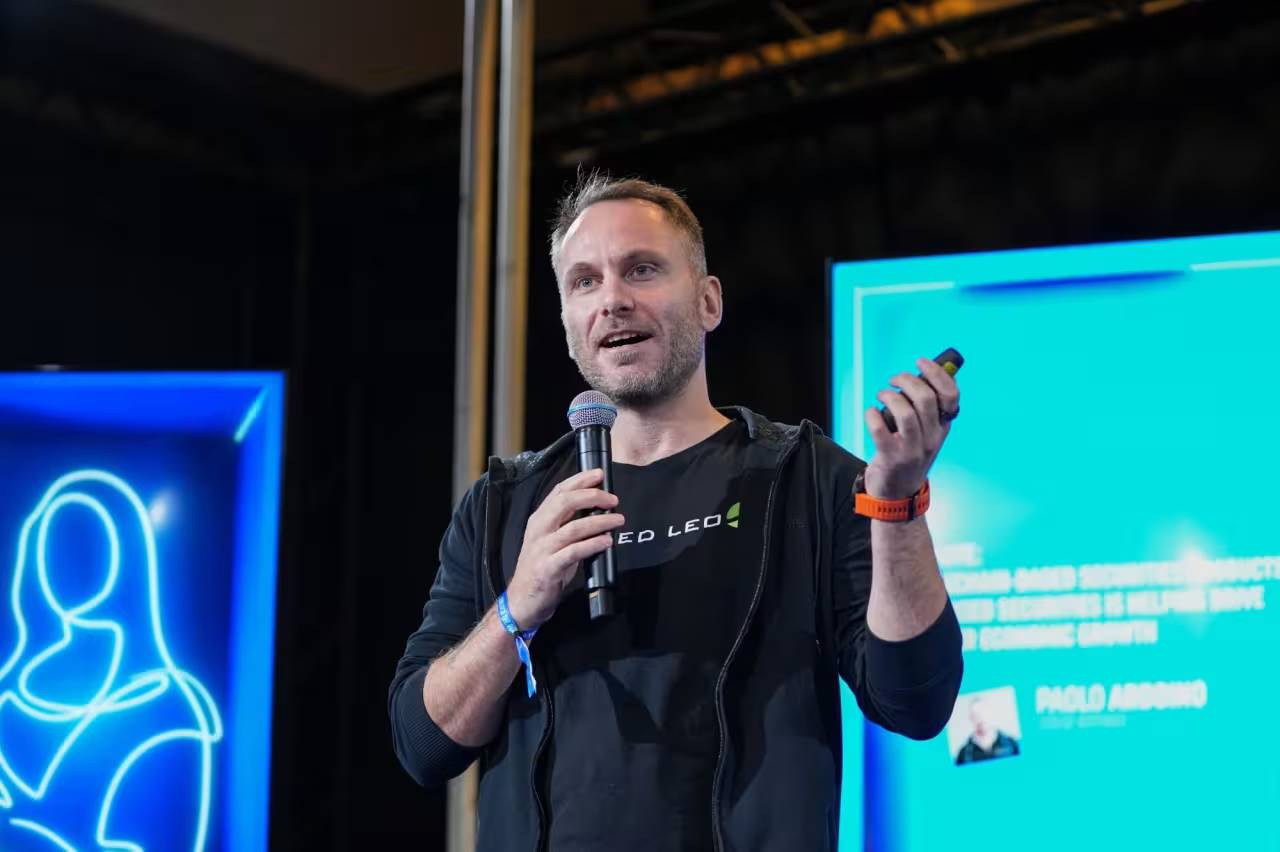
Paolo Ardoino, CEO of Tether
Tether CEO Paolo Ardoino claimed earlier this year that despite having fewer than 100 employees, its profit per employee was higher than any other company.
Ardoino said in a press release in May that Tether hopes to "build a fairer, more connected, and more accessible global financial system." He claimed that more than 300 million people are using USDT.
Washington can use sanctions to cut adversaries off from the dollar, and thus from much of the global trading system, because all dollar transactions involve banks regulated by the U.S. Tether subverts those powers.
“We need a regulatory framework that does not allow offshore dollar-backed stablecoin providers to violate our rules,” U.S. Treasury Undersecretary Wally Adeyemo told The Wall Street Journal. Adeyemo specifically mentioned Tether during his testimony before Congress in April.
The Journal interviewed Tether users, researchers and government officials and reviewed information on transactions between intermediaries, court and corporate records and blockchain data.
Tether did not respond to a request for comment. The company said in May that it was working with law enforcement to upgrade transaction monitoring to guard against illegal transactions. The company said Tether voluntarily freezes crypto wallets used to transfer crypto associated with sanctioned entities. Ardoino said Tether is taking a "proactive approach to protecting our ecosystem from illegal activity."
How USDT works
Tether Holdings, the company behind USDT, issues the virtual currency to a select group of direct customers (mostly trading firms) who wire real-world dollars to the exchange. Tether uses these dollars to buy assets (mostly U.S. Treasuries) to back the value of USDT.
Once in circulation, USDT can be traded with other tokens or traditional currencies through exchanges and local brokers. For example, in Iran, a cryptocurrency exchange called TetherLand allows Iranians to exchange rials for USDT.
Tether checks the identities of its direct customers, but the vast secondary market is unregulated. The tokens can circulate between digital wallets almost instantly. A United Nations report in January said USDT is the "first choice" for money laundering in Southeast Asia.
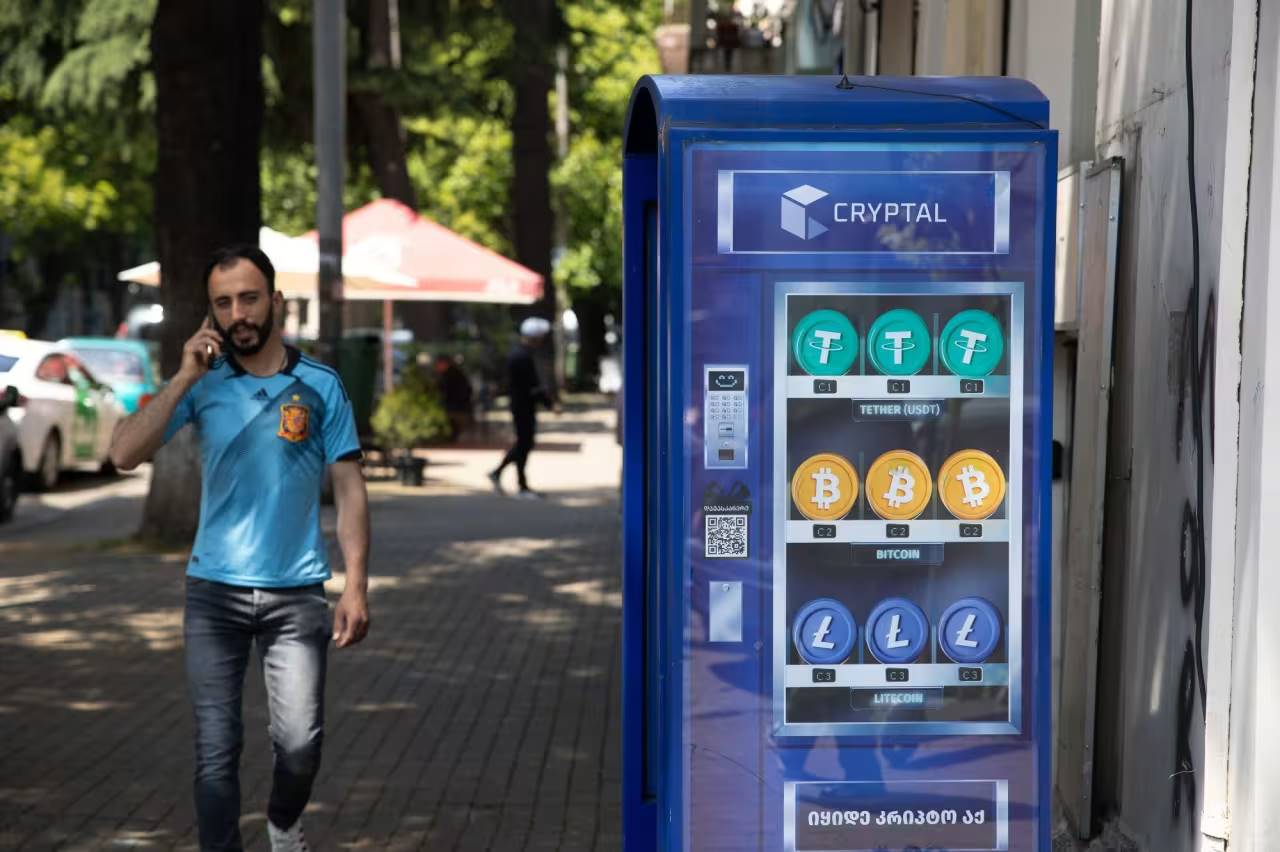
A cryptocurrency ATM in Batumi, Georgia, now supports Tether
Tether says it can track every transaction on the public blockchain ledger and can freeze and destroy USDT in any wallet.
But freezing wallets is like a game of whack-a-mole. According to data from crypto data provider ChainArgos, from 2018 to June this year, Tether blacklisted 2,713 wallets on the two most popular blockchains, which received a total of about $153 billion. Of this huge amount, Tether can only freeze $1.4 billion because the rest of the funds have already been transferred out.
Tether founder Giancarlo Devasini created USDT in 2014. Initial acceptance of the stablecoin was low, and William Quigley, an investor in the founding team, said profiting from the billions of dollars accumulated was just a "fantasy."
He and other co-founders soon sold their shares to Devasini, according to people familiar with the matter. Devasini has run Tether ever since. The low-key billionaire lives in a modernist villa in the French Riviera enclave of Roquebrune-Cap-Martin, according to company records. Devasini’s fellow Italian, Ardoino, became the face of Tether.
Tether's big breakout came during the 2020-2021 bull run, when traders used USDT as a denominated asset for buying and selling. The USDT market cap quickly soared from $4 billion to nearly $80 billion.
Everyone can use the US dollar
As Venezuela has fallen into financial isolation due to US sanctions and internal economic mismanagement, USDT has found a ready-made user base.
In 2020, President Nicolas Maduro’s government came under siege over U.S. measures against state-owned oil company Petroleos de Venezuela SA (PdVSA). In October of that year, Maduro’s parliament passed an “anti-blockade law” authorizing the government to use cryptocurrencies to secure its transactions.
According to people familiar with PdVSA, PdVSA began requiring payment for oil shipments in USDT. Purchase orders authorized by PdVSA typically instruct buyers to send USDT to a certain wallet address. Another method is for an intermediary to exchange cash deliveries for USDT and deposit the tokens into a prepaid travel card so that the cardholder can make purchases using cryptocurrency.
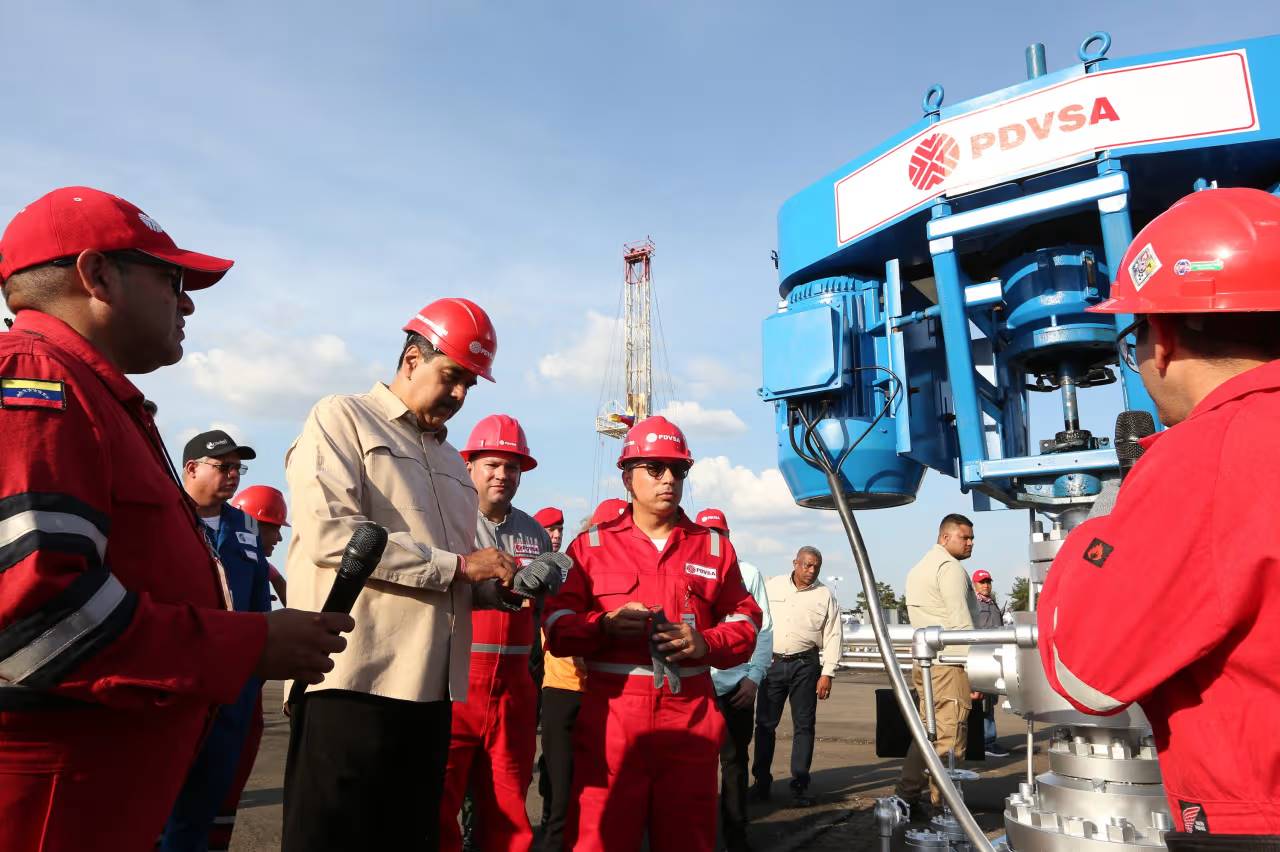
Venezuelan President Nicolas Maduro has passed a law allowing the government to conduct transactions in cryptocurrencies
PdVSA’s mass adoption of USDT had another effect: instead of returning oil revenues to the government, middlemen selling it kept the funds for themselves, sparking a scandal that led to the oil minister’s resignation.
“This use of cryptocurrencies only fuels huge corruption,” Rafael Ramírez, a former oil minister in Maduro’s government, said in an interview.
Venezuela’s government did not respond to a request for comment. The country’s attorney general said in April that the use of cryptocurrencies by middlemen allowed funds to be “stolen and undetected by the authorities.”
USDT has also become a lifeline for ordinary Venezuelans, whose 2 million percent inflation has wiped out their bolivar savings. Currency controls have made bank transfers abroad impractical.
Guillermo Goncalvez, a 30-year-old graduate from Caracas, runs a platform called El Dorado that provides peer-to-peer USDT trading for Venezuelans, connecting buyers and sellers directly.
El Dorado has over 150,000 users who pay a fraction of what traditional remittance agencies charge: local stores convert their daily income into USDT, Venezuelan immigrants send USDT back to their families, and freelancers receive their wages in USDT.
“USDT is the digital dollar for all Venezuelans,” Goncalvez said.
Enough money to fill a plane
The Wall Street Journal previously reported that USDT is an important payment channel in Russia.
This year, a confidential report drafted by a Russian government-backed research center found that USDT is one of the most popular ways for importers to convert rubles into foreign currency. Some large institutions are also involved: According to a company presentation published in June, Russian bank Rosbank provides customers with USDT transfers for payments to overseas suppliers. A Rosbank spokesperson did not respond to a request for comment.
USDT is also the currency of choice for the Russian elite.
A broker named Ekaterina Zhdanova told colleagues in Telegram chat messages in 2022 and 2023 that she was arranging huge ruble-to-USDT transactions for clients. According to blockchain data, the digital wallets of the clients mentioned by Zhdanova had transferred more than $350 million in USDT.
Born in a Siberian village, Zhdanova, 38, runs a concierge service that helps wealthy Russians obtain foreign visas and a travel agency that organizes luxury cruises. Her ex-husband was a top lieutenant to a billionaire Russian real estate developer.
Russia’s invasion of Ukraine and subsequent sanctions caused demand for her business to skyrocket.
Two months after the war broke out, Zhdanova relayed a client’s request to a group of large Russian cryptocurrency traders, according to chats on Telegram. She said the client wanted to buy about $10 million in USDT per month, for a total of $300 million, in exchange for cash to be delivered in the United Arab Emirates or Turkey.
After finding dealers willing to take the deal, Zhdanova told them she could coordinate the collection of the cash.
"They're going to use the planes to get the cash," she said.
Late last year, the Treasury Department imposed sanctions on Zhdanova, accusing her of moving assets for unnamed oligarchs. French police detained her at a French airport as part of a separate money-laundering investigation in France, people familiar with the matter said. She remains in custody. Zhdanova’s lawyer declined to comment.
"Everything. Everywhere."
Tether is currently investing in startups that use USDT for everyday payments. The more users Tether attracts, the more USDT it needs to issue.
A green “T” token symbol with a circle glows outside a currency exchange with blacked-out windows in Tbilisi, Georgia, a popular destination for Russian immigrants. A sign advertising the ATM says users can deposit stablecoins.
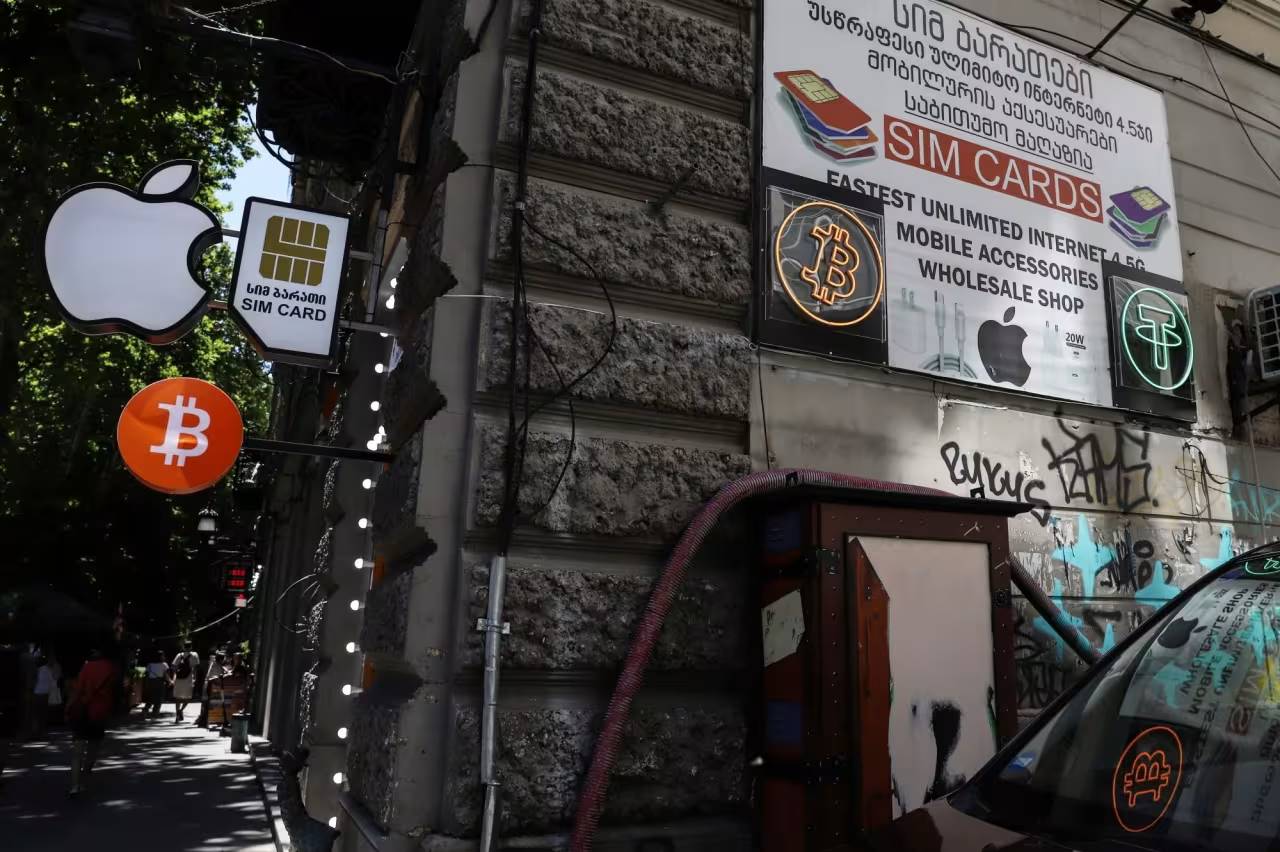
The Tether logo appears outside a store in Tbilisi, Georgia.
Tether CEO Ardoino visited Georgia last year and approached government officials with an offer to help develop the local crypto economy. They signed a cooperation agreement that Ardoino said would make the former Soviet Union a thriving payment hub. Tether has invested $25 million in local startups, according to the Georgian Innovation Agency.
Tether’s major investment company CityPay.io has launched a USDT payment system for thousands of Georgian companies. Hotels including the Radisson Blu Iveria in downtown Tbilisi have CityPay terminals, and the company has also partnered with a local real estate company to support USDT purchases of luxury apartments.
CityPay also offers USDT international payments services for businesses, with total payments of up to $50 million per month, according to CityPay Turkey CEO Eralp Hatipoglu. He said pressure from the United States on the global banking system has created these new opportunities. Businesses exporting from Turkey to Georgia are subject to scrutiny by correspondent banks, and wire transfers take days, he said.
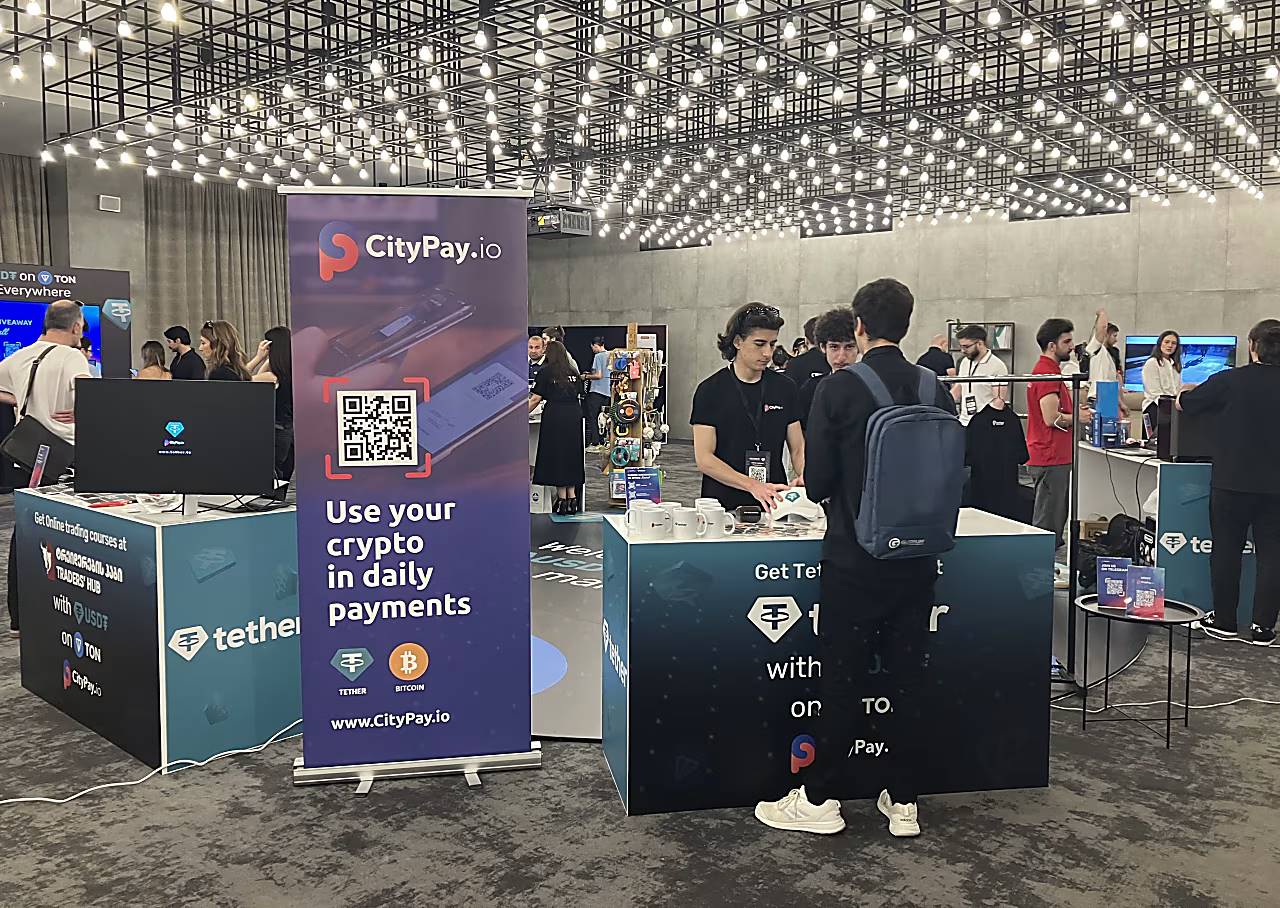
Tether-sponsored crypto conference held in Tbilisi, Georgia
CityPay's website claims "100% anonymous transactions", but Hatipoglu said they verify customer identities against sanctions lists and do not accept Russian companies.
Tether has said it aims to expand CityPay to other emerging markets. In June, at a cryptocurrency conference in a Tbilisi skyscraper that Tether sponsored, Tether’s head of expansion attended with banners advertising USDT for everyday payments on CityPay. Guests lined up to buy coffee with USDT.
“Pay with USDT,” one sign read. “Everything. Everywhere.”








